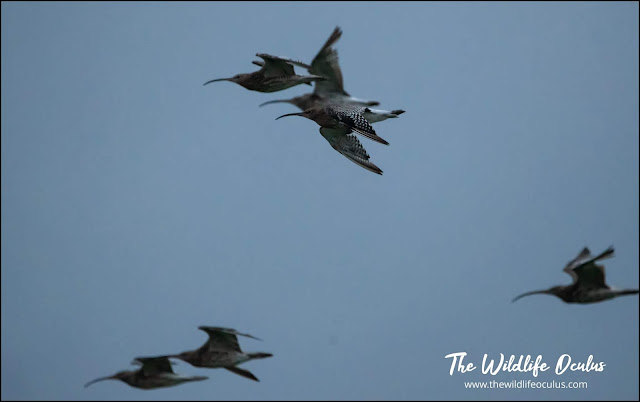Curlews flying in to roost
I did a quick circuit of the reserve. Monks was empty. Becs had the usual swans, ducks, lots of Little Egrets and a big flock of Black Tailed Godwits (300 +) with some Knot mixed in (13).
 |
| Knot flying over Priors |
The wind had whipped up and I had a job to stand on the Snipe platform. Standing up on the sea wall and using the scope was a real challenge. The tide was being pushed in by an almost gale force wind. It would result in a very high tide that would cover the salt marshes bordering the pill.
The seawall hide provided me with some shelter from the elements. Becs Lagoon had a substantial flock of birds gathering. There were large numbers of Black Headed Gulls with what looked like a juvenile Great Black Backed Gull which was scaring everything. Adding to the Gulls numbers were increasing amounts of Curlews, Lapwings, Shelducks and Oystercatchers. Occasionally a flock of Dunlins and Ringed Plovers would hurtle across the lagoon piping loudly but rarely settling as if they just could not decide where to roost.
I noticed a redshank sized wader settle on the mud near the seawall hide and begin to feed. It then stood bolt up right and I recognised it as a Ruff. It did not stay long before flying off towards the pill.
As high tide neared and the clouds darkened even more waves of Curlews and Oystercatchers came in.
A huge flock of Curlews flew in from Goldcliffs sea wall crossing the fields and swooping over the top of Hide 1 before landing in Monks Lagoon.
It was great to see just as shame the light faded so quickly as the storm closed in.
I walked back around to Monks and observed a lagoon full of Curlew, Oystercatchers, Shelduck and Black Headed Gulls ( and the odd Godwit).
Its a lovely sight to witness when the Curlews all come in to roost. They call to each other as they gather ,their haunting calls really carrying in the dusky evening air and sound amazing.






Comments
Post a Comment